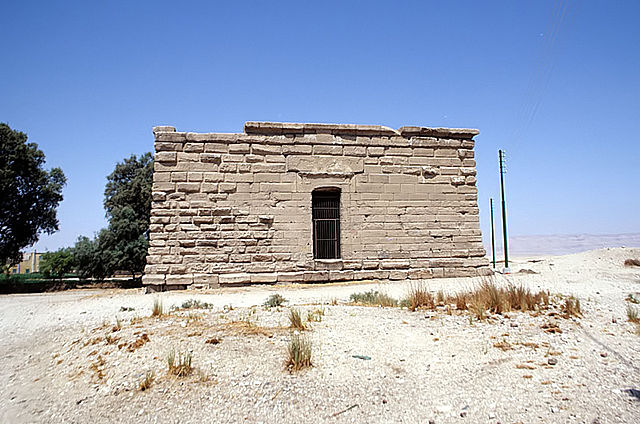Deir el-Shelwit is an ancient Egyptian temple located on the west bank of the Nile, near Luxor, Egypt. It is dedicated to the goddess Isis, a major deity in the Egyptian pantheon. This small and relatively lesser-known temple stands out for its late construction, dating back to the Roman period in Egypt. Despite its size, Deir el-Shelwit is significant for its well-preserved wall reliefs and inscriptions, which provide insights into the religious practices of the time.
Get your dose of History via Email
Historical Background of Deir el-Shelwit
The temple of Deir el-Shelwit was not discovered until the 19th century. It was built during the Roman period, a time when Egypt was under the control of the Roman Empire. The construction of the temple is attributed to the Roman Emperor Hadrian, who ruled from 117 to 138 AD. However, some additions were made later by his successors.
Unlike the grand temples of the Pharaonic era, Deir el-Shelwit was modest in scale. It served as a local place of worship rather than a monumental state temple. The temple’s dedication to Isis reflects the goddess’s enduring popularity, even as Egyptian civilization came under Roman influence.
Over the centuries, the temple fell into disuse and was eventually abandoned. It was not until the 19th century that it came to the attention of archaeologists. The temple’s isolation helped preserve its artworks from the extensive looting that affected many other ancient Egyptian sites.
There is no record of significant historical events taking place at Deir el-Shelwit. However, its inscriptions and reliefs provide valuable information about the religious life and practices during the Roman period in Egypt. The temple’s architecture and art also reflect a fusion of Egyptian and Roman styles.
Although not as frequented by tourists as other temples in the area, Deir el-Shelwit remains an important site for understanding the complexity of Egyptian religion and its ability to adapt to changing political landscapes.
About Deir el-Shelwit
Deir el-Shelwit is a single-chamber temple, a rare architectural style for Egyptian temples. It is built of local limestone and measures approximately 18 meters by 14 meters. The temple’s modest size suggests it served a local community rather than a royal audience.
The temple’s entrance is marked by a small pylon, leading to a forecourt and the main building. The walls are adorned with reliefs depicting various deities, including Isis, Osiris, and Horus, showcasing the rich tapestry of Egyptian mythology.
One of the architectural highlights of Deir el-Shelwit is its well-preserved ceiling, decorated with astronomical symbols. These decorations reflect the Egyptians’ advanced understanding of astronomy and its significance in their religious practices.
The construction techniques used in Deir el-Shelwit are typical of the Roman period in Egypt. Builders used limestone blocks joined with mortar, and the reliefs were carved directly into the stone walls.
Despite its small size, the temple’s preservation allows visitors to get a glimpse of the vibrant colors that once adorned the walls. Traces of the original pigments can still be seen on some of the reliefs, providing a rare insight into the artistic conventions of the time.
Theories and Interpretations
The primary function of Deir el-Shelwit was as a place of worship for the goddess Isis. However, the presence of other deities in the reliefs suggests that the temple may have served a broader religious purpose.
Some scholars theorize that the temple’s location, away from major urban centers, indicates it may have been part of a larger complex or served a specific community, such as a military garrison or a rural population.
The astronomical symbols on the ceiling have led to various interpretations regarding their significance. Some suggest they were part of the religious rituals, aligning the temple’s activities with celestial events.
There is no definitive evidence to resolve all mysteries surrounding Deir el-Shelwit. The temple’s history has been pieced together through careful examination of its inscriptions and comparison with other contemporary sites.
Radiocarbon dating and other scientific methods have not been extensively applied to Deir el-Shelwit. However, the style of the reliefs and inscriptions has allowed historians to date its construction to the Roman period confidently.
At a glance
Country: Egypt
Civilization: Roman Period of Egypt
Age: Approximately 1,900 years old (2nd Century AD)
Conclusion and Sources
The following sources were consulted for the creation of this article:

